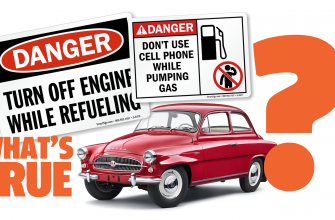When it comes to the intricate workings of a vehicle, many components play a crucial role in its operation. Among these, the ignition switch stands out as a key player, acting as the gateway between the driver and the vehicle’s engine. This article delves into the ignition switch—its function, types, and significance in vehicle operation.
- What is an Ignition Switch?
- How Does the Ignition Switch Work?
- Types of Ignition Switches
- Importance of the Ignition Switch
- Common Issues with Ignition Switches
- From Mechanical to Electronic: A Technological Leap
- Smart Key Systems: A New Era of Convenience
- The Role of Safety in Ignition Switch Design
- Future Trends: What Lies Ahead?
What is an Ignition Switch?
The ignition switch is an electrical component that activates the vehicle’s electrical system and engine. It is typically located on the steering column or dashboard, allowing the driver to start and stop the engine easily. When the key is turned or the push-button is pressed, the ignition switch completes a circuit that sends power to the engine’s ignition system, fuel system, and other vital electronic systems.
How Does the Ignition Switch Work?
The operation of an ignition switch can be broken down into several key steps:
- Key Insertion: The driver inserts the key into the ignition cylinder or presses the start button.
- Power Activation: Turning the key or pressing the button sends an electrical signal to the ignition switch, activating the vehicle’s electrical systems.
- Fuel Pump and Ignition System Engagement: The switch activates the fuel pump and ignition system, allowing fuel to flow to the engine and creating a spark for combustion.
- Engine Start: The starter motor engages, cranking the engine to begin operation.
In essence, the ignition switch serves as the control hub for the vehicle’s ignition system, enabling the engine to start and ensuring that power is supplied to other essential components.
Types of Ignition Switches
Ignition switches come in various types, each designed to serve specific vehicle models and technologies. The most common types include:
- Mechanical Ignition Switch: Traditional vehicles often feature a mechanical ignition switch that requires a physical key to operate.
- Electronic Ignition Switch: Modern vehicles may use an electronic ignition switch that relies on a key fob or push-button start system, enhancing security and convenience.
- Smart Key Systems: These advanced systems allow drivers to start the vehicle without physically inserting a key, using proximity sensors to detect the key fob’s presence.
Importance of the Ignition Switch
Understanding the ignition switch’s role is essential for several reasons:
- Vehicle Security: The ignition switch is integral to a vehicle’s anti-theft system. A malfunctioning switch can compromise security, making it easier for unauthorized individuals to start the vehicle.
- Engine Performance: A faulty ignition switch can lead to starting issues or stalling while driving, significantly affecting engine performance and safety.
- Diagnostics: Many modern ignition switches are equipped with diagnostic capabilities, allowing mechanics to identify and troubleshoot issues quickly.
Common Issues with Ignition Switches
Like any component, ignition switches can experience problems over time. Common issues include:
- Failure to Start: A worn-out or faulty ignition switch may prevent the engine from starting altogether.
- Intermittent Electrical Problems: A malfunctioning switch can lead to electrical gremlins, causing lights, accessories, or the engine to behave erratically.
- Key Stuck in Ignition: Mechanical switches can sometimes jam, leaving the key stuck in the ignition, which can be frustrating for the driver.
The ignition switch is a vital component of vehicle operation, serving as the linchpin that connects the driver to the engine. Understanding its function, types, and importance can empower vehicle owners to recognize potential issues and seek timely repairs. By ensuring that the ignition switch is in good working condition, drivers can enhance both their vehicle’s performance and security.
So, the next time you turn the key or press the button to start your vehicle, remember the significant role the ignition switch plays in igniting your journey.
As automotive technology has advanced, so too has the ignition switch. From the early days of simple mechanical systems to today’s sophisticated electronic controls, the evolution of the ignition switch reflects broader changes in vehicle design and consumer expectations. Understanding this progression not only sheds light on how far we’ve come but also prepares us for the future of automotive innovation.
From Mechanical to Electronic: A Technological Leap
Initially, ignition systems operated on a basic mechanical principle. Drivers would insert a key, turn it, and the ignition switch would engage the starter motor. This straightforward mechanism, while effective, had limitations in terms of security and efficiency. As vehicles became more complex, so did their ignition systems.
The advent of electronic ignition systems marked a significant turning point. These systems allowed for improved timing and more efficient fuel consumption, leading to better engine performance overall. Electronic ignition systems also facilitated the integration of additional features, such as remote start and keyless entry, which are now commonplace in modern vehicles.
Smart Key Systems: A New Era of Convenience
One of the most exciting developments in ignition switch technology is the smart key system. These systems use radio frequency identification (RFID) to detect the presence of the key fob, allowing drivers to start their engines with the push of a button. This advancement has not only enhanced convenience but also improved vehicle security by making it more difficult for thieves to replicate keys.
Moreover, smart key systems often integrate with other vehicle technologies, such as advanced driver-assistance systems (ADAS), creating a more seamless driving experience. The future of ignition switches likely lies in even more sophisticated technology, potentially including biometric authentication methods that ensure only authorized users can start the vehicle.
The Role of Safety in Ignition Switch Design
As with all automotive components, safety is paramount in the design and functionality of ignition switches. The National Highway Traffic Safety Administration (NHTSA) has established guidelines to ensure that ignition switches operate reliably under various conditions, minimizing the risk of failure. This focus on safety has led to the implementation of features such as “engine immobilizers,” which prevent the engine from starting without the correct key or fob.
Moreover, manufacturers are continually working to improve the durability of ignition switches, ensuring they can withstand wear and tear over time. This commitment to safety and reliability is crucial for maintaining consumer trust and satisfaction.
Future Trends: What Lies Ahead?
Looking ahead, the ignition switch will likely continue to evolve alongside broader automotive trends. As electric vehicles (EVs) become more prevalent, the ignition switch’s role may change significantly. Instead of starting an engine, it could simply activate the vehicle’s electrical systems, reflecting a shift in how we think about ignition and vehicle readiness.
Furthermore, the integration of artificial intelligence (AI) and machine learning could lead to ignition systems that learn driver preferences and behaviors, optimizing the driving experience based on individual habits. Imagine a vehicle that not only starts with a simple gesture but also adjusts settings such as climate control and seat position automatically, creating a personalized driving environment.
The ignition switch has come a long way since its inception, evolving from a simple mechanical device to a complex electronic system that enhances convenience, security, and safety. As we move into a new era of automotive technology, the ignition switch will undoubtedly continue to adapt, reflecting the ongoing innovations that shape the automotive landscape.
For drivers, understanding these changes is not just about appreciating the technology behind their vehicles; it’s about embracing a future that promises to be more connected, efficient, and secure. So, the next time you press that ignition button, remember that you’re engaging with a piece of technology that has a rich history and an exciting future ahead.









I found this article to be very helpful! Understanding how an ignition switch works has given me a new appreciation for my vehicle’s components.
This article provides a clear and concise explanation of the ignition switch. I appreciate how it breaks down the function and operation into easy-to-understand steps!
Great article! It simplifies complex information about ignition switches, making it accessible for all readers. I learned a lot from it!
Fantastic read! The way the author explains the ignition switch’s role in starting the engine is very informative. Highly recommend for anyone interested in car mechanics.
I never realized how crucial the ignition switch is for vehicle operation until reading this article. The details about its types were particularly insightful!